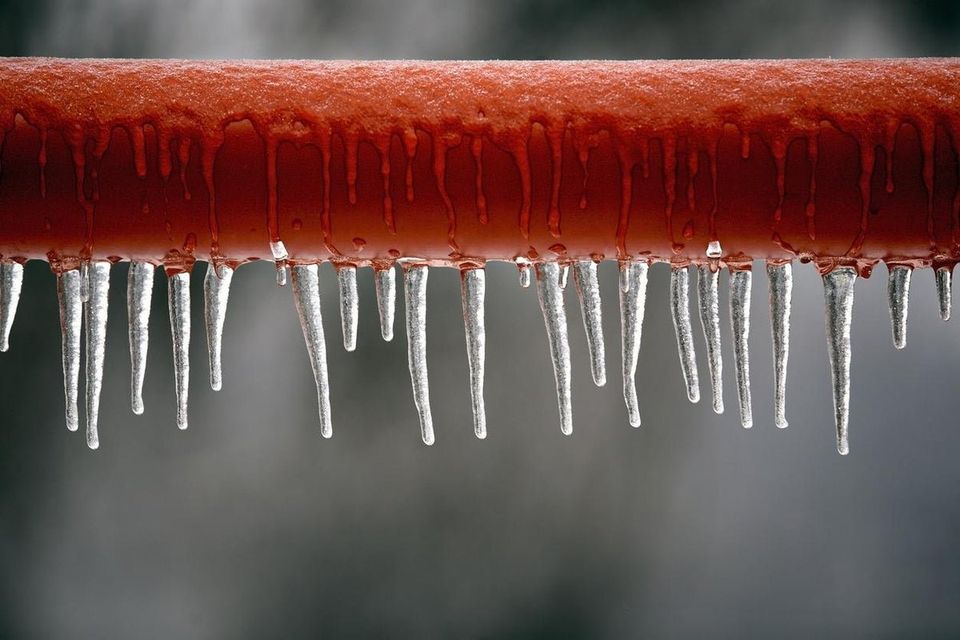Do you find yourself looking for tips involving Winter Plumbing Precautions: Preventing Frozen Pipes?

Cold weather can ruin your pipes, particularly by freezing pipelines. Here's just how to avoid it from taking place and what to do if it does.
Introduction
As temperature levels decrease, the risk of frozen pipelines increases, possibly leading to costly repair work and water damage. Comprehending just how to stop icy pipelines is crucial for property owners in cold climates.
Prevention Tips
Shielding vulnerable pipelines
Cover pipes in insulation sleeves or use warm tape to secure them from freezing temperature levels. Focus on pipes in unheated or exterior locations of the home.
Home heating techniques
Keep interior spaces sufficiently heated up, specifically locations with pipes. Open up cupboard doors to enable warm air to flow around pipelines under sinks.
Just how to determine frozen pipes
Search for decreased water flow from taps, uncommon odors or noises from pipelines, and noticeable frost on revealed pipelines.
Long-Term Solutions
Structural adjustments
Consider rerouting pipelines away from exterior wall surfaces or unheated areas. Add added insulation to attics, cellars, and crawl spaces.
Updating insulation
Purchase high-quality insulation for pipelines, attics, and wall surfaces. Appropriate insulation helps preserve consistent temperature levels and decreases the risk of frozen pipelines.
Safeguarding Exterior Plumbing
Yard hose pipes and exterior faucets
Detach and drain pipes garden pipes before wintertime. Mount frost-proof spigots or cover outside taps with insulated caps.
Comprehending Icy Pipelines
What causes pipes to ice up?
Pipelines freeze when revealed to temperature levels below 32 ° F (0 ° C) for prolonged durations. As water inside the pipelines ices up, it expands, taxing the pipe walls and potentially causing them to rupture.
Dangers and damages
Frozen pipes can cause water disturbances, residential or commercial property damage, and expensive repair services. Ruptured pipes can flood homes and cause extensive architectural damages.
Indications of Frozen Pipeline
Identifying icy pipelines early can avoid them from bursting.
What to Do If Your Pipes Freeze
Immediate activities to take
If you believe icy pipes, maintain faucets open to soothe stress as the ice melts. Make use of a hairdryer or towels soaked in warm water to thaw pipelines slowly.
Conclusion
Stopping frozen pipelines requires aggressive steps and fast responses. By recognizing the causes, indications, and preventive measures, house owners can protect their pipes during cold weather.
5 Ways to Prevent Frozen Pipes
Drain Outdoor Faucets and Disconnect Hoses
First, close the shut-off valve that controls the flow of water in the pipe to your outdoor faucet. Then, head outside to disconnect and drain your hose and open the outdoor faucet to allow the water to completely drain out of the line. Turn off the faucet when done. Finally, head back to the shut-off valve and drain the remaining water inside the pipe into a bucket or container. Additionally, if you have a home irrigation system, you should consider hiring an expert to clear the system of water each year.
Insulate Pipes
One of the best and most cost-effective methods for preventing frozen water pipes is to wrap your pipes with insulation. This is especially important for areas in your home that aren’t exposed to heat, such as an attic. We suggest using foam sleeves, which can typically be found at your local hardware store.
Keep Heat Running at 65
Your pipes are located inside your walls, and the temperature there is much colder than the rest of the house. To prevent your pipes from freezing, The Insurance Information Institute suggests that you keep your home heated to at least 65 degrees, even when traveling. You may want to invest in smart devices that can keep an eye on the temperature in your home while you’re away.
Leave Water Dripping
Moving water — even a small trickle — can prevent ice from forming inside your pipes. When freezing temps are imminent, start a drip of water from all faucets that serve exposed pipes. Leaving a few faucets running will also help relieve pressure inside the pipes and help prevent a rupture if the water inside freezes.
Open Cupboard Doors
Warm your kitchen and bathroom pipes by opening cupboards and vanities. You should also leave your interior doors ajar to help warm air circulate evenly throughout your home.

We were shown that report on 6 Ways to Prevent Frozen Pipes from someone on our other web page. Enjoyed our blog entry? Please quickly share it. Help others discover it. We recognize the value of reading our article about How to prepare your home plumbing for winter weather.
This Resource